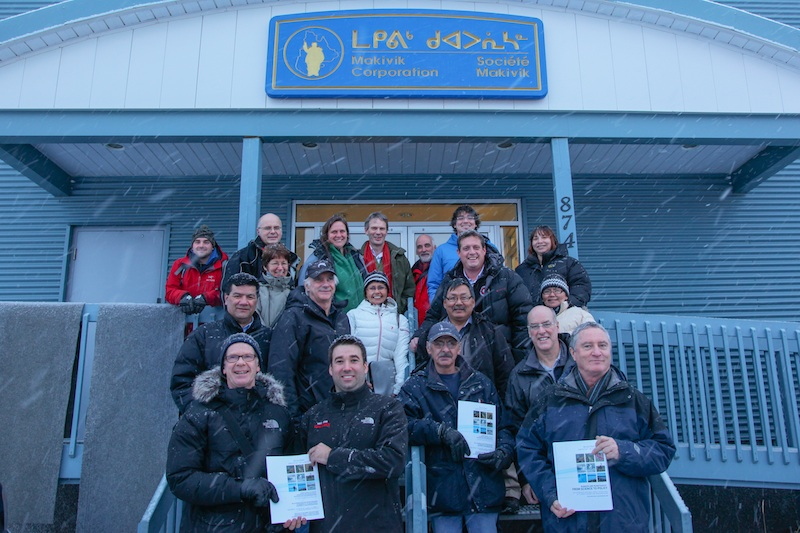
Iqaluit Coast Guard Office Maintains Pan-Arctic Vigil
Traffic services centre directs Northern Canadian shipping between the Greenland and Alaska boundaries
by Peter Varga for Nunatsiaq On line
Out of a small station in Iqaluit that looks out onto Frobisher Bay, a team of 11 Coast Guard staff oversee ship traffic throughout all of Canada’s vast expanse of Arctic waters.
“Until about 20 years ago, we had maybe 15 stations in the Arctic,” says Jean-Pierre Lehnert, who heads up the Marine Communications and Traffic Services office in Iqaluit. “But because of the satellite technology now, we can bring everything into this one centre.”
From here, the Coast Guard keeps tabs in Canadian Arctic waters on all foreign and domestic ships of a certain size, carrying 453 or more cubic metres of fuel. The area they cover stretches from the sea boundary with Greenland in the east to Alaska in the west and includes the Mackenzie River and Great Slave Lake in the Northwest Territories.
Although it is huge, covering the most extensive sea area under the jurisdiction of the second biggest country on Earth by area, the Canadian Arctic hosts commercial traffic for just six to eight months of the year, when they are not frozen solid.
Lehnert and his team start working seven days a week from the first signs of thaw, May 1, straight through to the end of December, when freeze-up is complete. A small fleet of five Coast Guard icebreakers patrol the Arctic seas and keep waterways clear of ice during the season, four covering Nunavut and the Eastern Arctic, and one covering the west.
Traffic has increased steadily in recent years, Lehnert says, and ice cover has gradually declined due to global warming. At peak traffic times in August and September, the office keeps tabs on 70 ships at any one time.
“And those are vessels that are reporting,” he said. “Besides that you have all these adventurers that are not reporting but they are in the system. And you try to keep a look on them as well.”
Cargo and tanker ships, which supply Nunavut’s communities throughout the short sealift season, make up the greatest share of traffic in Arctic waters. On an average mid-week day in July, Lehnert’s team monitors more than 30 ships. Large screens display readouts on ships’ positions, updated every six hours, as well as ice conditions in every part of the Arctic.
From the Atlantic, the Canadian Arctic starts at the 60th parallel, 200 miles from land. Any ship’s journey starts 96 hours before hitting that line, says Lehnert. “The vessel has to report a list of crew members, passports, everything.” Anything out of line, says Lehnert, “like if you suspect someone onboard to be a terrorist, for example, then this will be targeted as a vessel of special interest. You’ll have a much closer follow-up on the vessel.”
Ships must also meet regulations on safety, pollution, and crew training, he says. Once cleared, the ship must off load all ballast water to keep possible contaminants – biological or chemical – out of Canadian waters.
The gradual opening up of ice-free passages from one end of the Arctic to the other has drawn greater interest from non-commercial pleasure craft, he says.
“Only four or five years ago we had two or three pleasure craft doing the Northwest Passage in a season. Now last year, we had over 20,” Lehnert said. “Unlike commercial vessels, these don’t have to report on a regular basis due to their size. Unfortunately, too few of them seem to realize how huge and remote the Arctic is, and don’t call until they need an icebreaker or other emergency help. Generally they’re okay, but some of them just don’t want to have anything to do with us, and a lot of them don’t realize what they’re getting into,” Lehnert said.
Unfortunately, the Coast Guard doesn’t hear much from these vessels until they’re stuck in ice.
“When they call us to say they need help, the icebreaker could be sitting 800 miles away,” he says, adding that such help costs Canadian taxpayers $50,000 a day. Rescues also interrupt other work. “They might be doing hydrographic surveys, scientific work, or setting buoys, so they have to leave everything behind to save or get that guy out of the ice.”
The station keeps radio watch on all international distress and safety frequencies, and sometimes contributes to rescue operations far from Canadian waters. High-frequency signals can travel from completely different parts of the world, as they reflect off the Earth’s upper atmosphere and “have a tendency to bounce back at the poles,” says Lehnert.
If a distress call is outside Canadian waters, the office contacts search and rescue authorities of the host country.
“If they don’t know about it and they cannot communicate with that ship, we do it from here,” says Lehnert, adding that his office recently helped in the rescue of ships near Hawaii and Ireland.
“It could happen at any time. It might be quiet, then all of sudden this brick comes down and you have to react very quickly.”
For more on Canada’s Arctic visit www.nunatsiaqonline.ca








